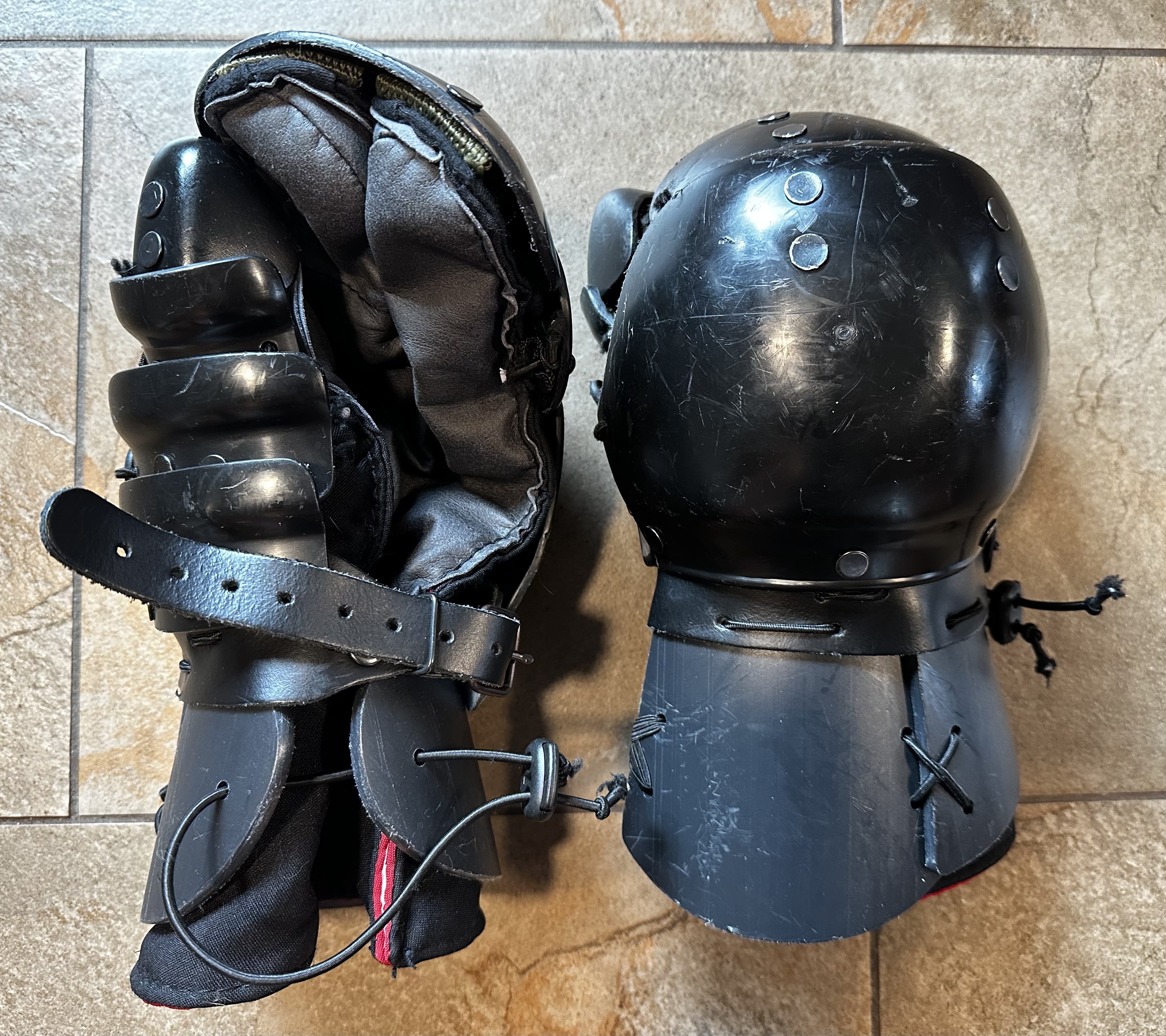
Posted: 15 January 2023 | Last modified: 27 March 2024 | Expires: 11 October 2025
As I previously wrote when writing up my thoughts about the Sparring Gloves Mittens, “heavy” gloves are generally advised for sparring with a longsword, but they also work for other weapons to include one-handed weapons that don’t have extensive built-in hand protection, and where you don’t need individual finger articulation. Enclosed gloves are preferred by most, versus “five finger gloves” in which each finger has its own protection, owing to the fact that it’s much easier to protect the hand using mittens/clamshell-style coverings. Mobility-wise, what you give up is minimal in longsword handling, in exchange for substantially better protection, especially if cost is a big factor.
For a long time, the two leading contenders for heavy gloves were the Mittens, and the SPES Lobster Gloves. (The “Lobster” branding across the lineup is fairly new, as the basic and “full thumb” versions were previously just called “Heavy Gloves”, or “Heavies”.) The Lobsters come in four versions:
Of note is that there is now a V3 version of the Lobster gloves, which is the latest iteration. This review was made prior to this release, so I can’t comment on V3 changes. Further, the Red Lobsters are no longer available in the form discussed in this review, but preorders are being taken for the V2 Red Lobsters, which appear to be based on the V3 Lobsters.
Like Sparring Gloves, SPES is also a Polish company, but their US importer is Purpleheart Armoury. Whereas the Mittens are favored in the European competition scene, the Lobsters are the de facto gloves in the American scene. I assume this is at least partially due to the fact that Purpleheart is arguably the largest HEMA store in North America, and since it doesn’t carry the Mittens, more folks have gravitated towards the Lobsters as the default heavy glove offering.

As noted, several versions of the Lobsters exist, with changes mostly tied to the cuff material and thumb protection. The Red Lobster variant has plastic plating covering the wrist cuff, and has the full thumb protection that’s recommended for maximum protection. The underglove is partially 800N-rated, and the interior of the gloves are red, playing into the “Red Lobster” monicker. The Red Lobsters run $260, which is $17 more than the Lobster Full Thumb. For that little additional cost, the Red Lobsters are a worthwhile upgrade, as long as you fit the M/L sizing; the Red Lobsters only come in one size for now.
After ordering my Sparring Gloves, I quickly realized that delivery would take longer than I initially anticipated. Wanting more protective gloves sooner, I found the Red Lobsters in-stock at Purpleheart and picked a pair up. I was initially a bit skeptical the gloves would fit, as when I measured my hands I expected to fit a smaller size, or M at most. This was true for the Mittens too (and why I opted for custom sizing there). I found it a bit odd that an M/L size was even a thing, as there’s usually a noticeable difference between a medium and large glove, but I figured I could just return the Red Lobsters if they proved too big. Luckily, the gloves fit very well, and didn’t seem to need as much break-in as the Mittens would. Suffice to say, glove sizing charts seem pretty weird across the board, or there are just more factors that play into a good fit than the measurements themselves suggest.
Unlike the Mittens, the Red Lobsters are fully-enclosed, meaning they have an integrated underglove. That underglove is hoof-style, so there are two pockets for your fingers: one for your index and middle finger, and one for your ring and pinky finger. The back side of the underglove is made of 800N fabric, so it’s cut/stab resistant. Unfortunately, the palm-side is not rated similarly. The underglove seems to wear very well, with no fraying or other obvious signs of wear after a year of use. Over the underglove is plastic plating (polypropylene) held together via elastic straps and rivets. The elastic straps offer some movement between plates, and probably contribute to the lack of break-in required in these gloves.
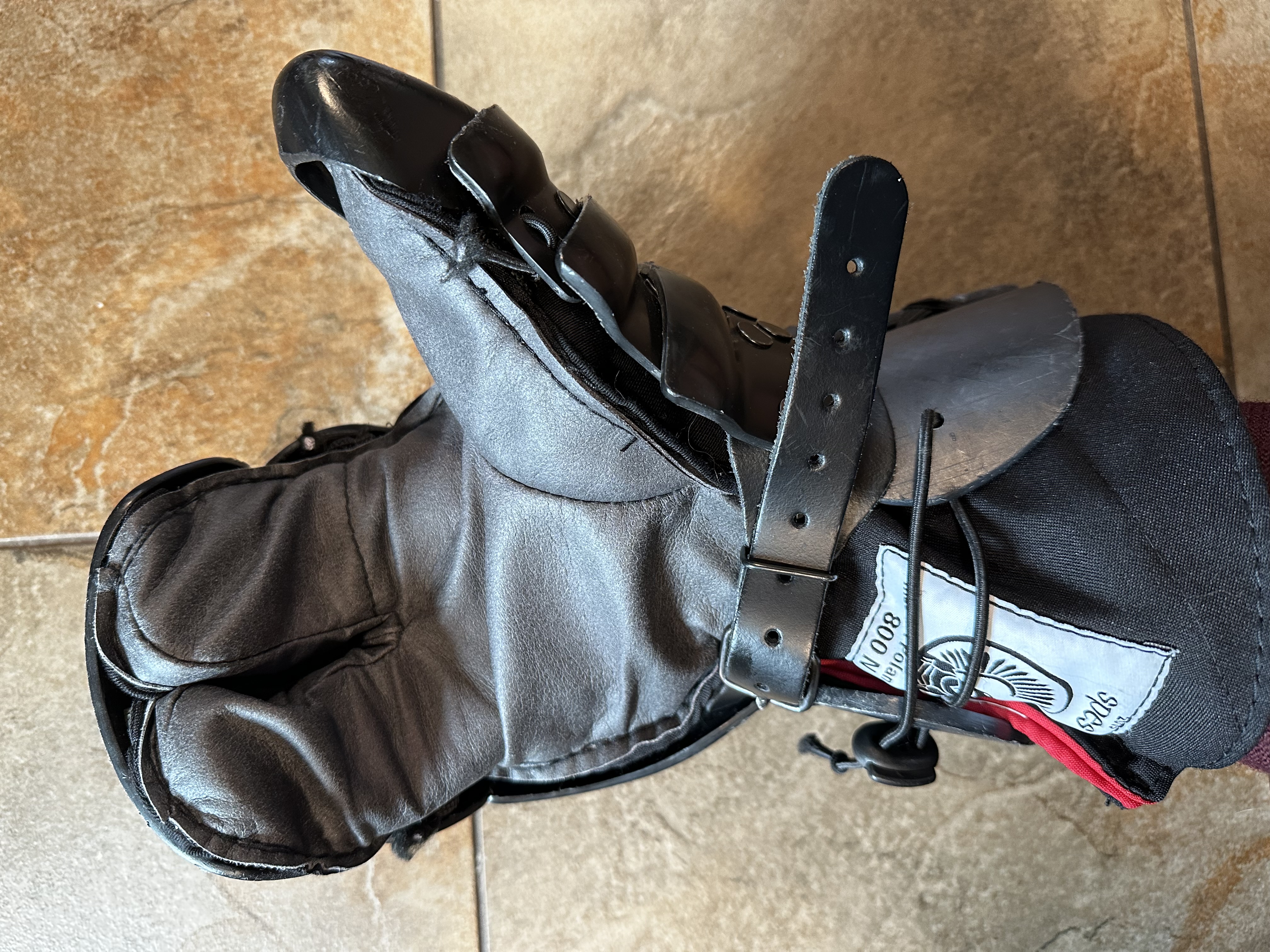
My pair of Red Lobsters weighed in at 1,165g, which is pretty much what they’re advertised at. That’s noticeably more weight than the Mittens, owing to the hard plastic plating, and the Red Lobsters don’t even have forearm coverage. Each glove was more similar in weight to one another than with the pair of Mittens, weighing in at at 575.5g and 589.5g. This weight seemed noticeable when I first got the Red Lobsters, but that feeling of carrying around extra weight went away after a couple weeks or so.
The Red Lobsters width is about 6.5”, so also larger than the Mittens, and this size seems noticeable in sparring because glancing hits seem more common. That said, even though the Red Lobsters are physically larger than the Mittens, the way the underglove is attached to the clamshell plates means that you can actually hold smaller sword grips better. I used the Red Lobsters not just for longsword practice, but with one-handed weapons too, mainly for eskrima sparring.
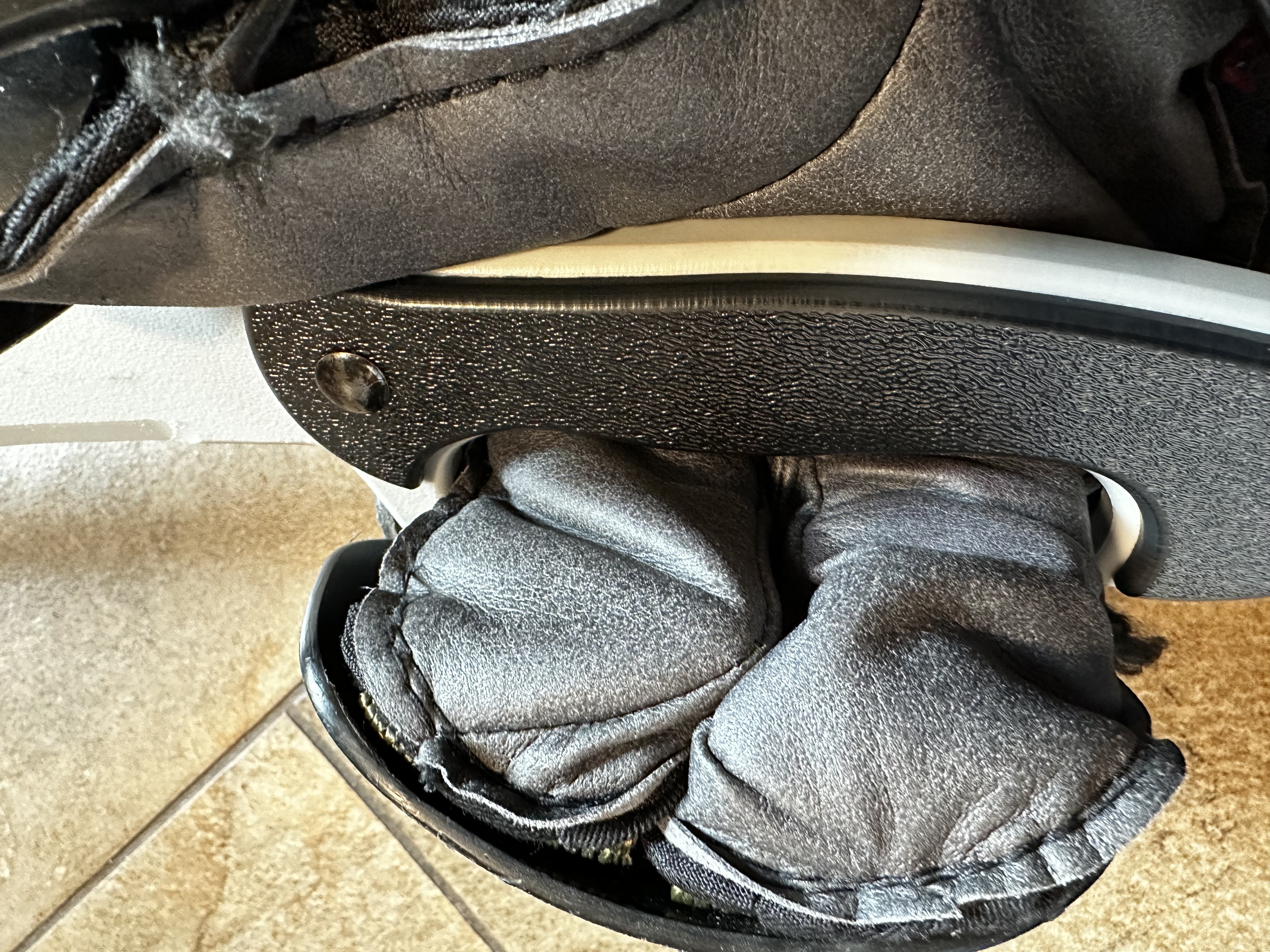
Unlike with the Mittens, I was able to hold every synthetic sword I use for eskrima without issue; the plates didn’t get in the way of the grip, and floated above and away from the underglove enough for my hand to rest comfortably on the grip. I was rather surprised by this, particularly because after using both the Mittens and Red Lobsters for longsword, I initially intended to relegate the Mittens to be my dedicated eskrima gloves, but that couldn’t work given the Mittens didn’t play with my synthetic sansibar. The Red Lobsters let me hold the sansibar without issue, so these were the gloves I’d bring to my eskrima classes.
With one-handed weapons, the Red Lobsters weren’t as fatiguing to use as the Mittens, which I suspect is due to the nature of how the plates are affixed to the underglove. With the Mittens, keeping a solid grip on the weapon requires bending the styrogum shell, which seems to provide a level of resistance that’s just not there with the Red Lobsters.
Proprioception with the Red Lobsters is great; the underglove is thin enough that you can feel the presence of the sword handle very well. The grip also provides adequate friction, so even when sparring with rattan sticks, I wasn’t afraid of the stick sliding away.
The cuff protects the wrist well too, and the flair is enough to let long forearm guards slide up to the bottom of the cuff for full coverage. Reports from users of the “lesser” Lobster gloves is that the cuff can get chewed up over time, whereas on the Red Lobsters, the addition of hard plates over the cuff prevents that.
As noted, the extra mass of these gloves is noticeable as far as glancing hits go, and compounding this is the fact that every hit to the hard plates makes a very audible sound. Often, I wouldn’t feel a thing after a light hit, but I’d hear the hit. Other times, even if I didn’t notice the sound, my opponent would, so in friendly club sparring where no one is judging the match, there may be some confusion about whether a hit was valid on intent, if the hit did or did not occur, etc. No big deal, but if you prefer muffled hits as with the Mittens, the Red Lobsters may not be for you.
Protection-wise, the Red Lobsters beat out the Mittens for sure; taking a hit to the hands where you actually feel any pain is way less likely with these than with the Mittens. No glove is full-proof, and of course there are horror stories of someone taking a freak hit even with a pair of Lobsters, but if you want the most protective glove you can get, at the expense of sleekness, the Red Lobsters are your choice.
About the biggest issue with these gloves is maintenance. Whereas the Mittens are pretty maintenance free save for some occasional retying of the cuff lace, the Red Lobsters have so a lot of elastic ties that eventually loosen or break. As noted, the addition of hard plates on the cuff on the Red Lobsters is nice, but the downside is more elastic ties to hold the plates in place.
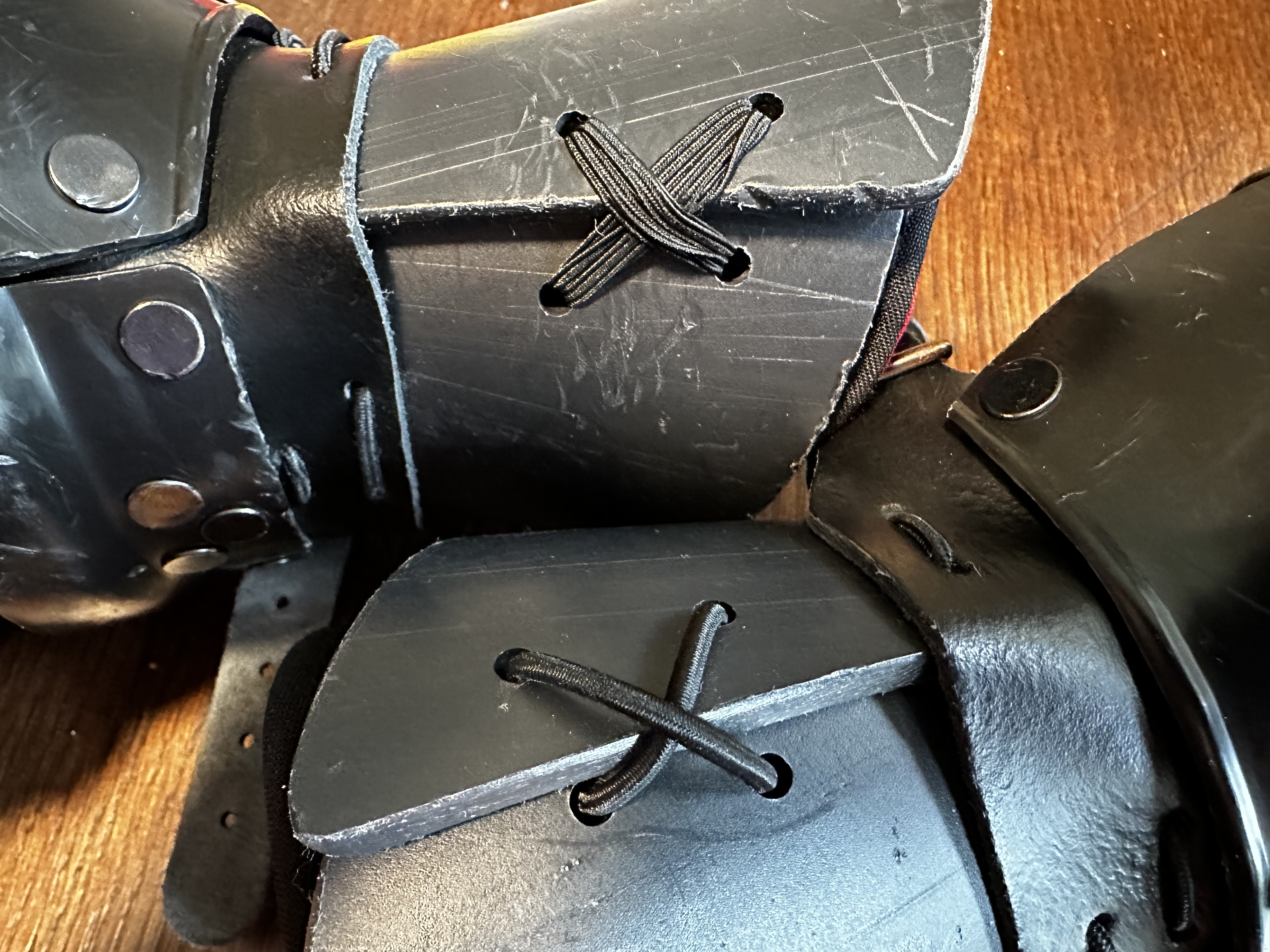
My first issue with the Red Lobsters was a couple months into owning them, when one of the elastic ties on the cuff plates slipped undone, and I found myself with a hanging plate, which my sparring partner was first to notice. You can make a pretty quick fix by retying the elastic with the knot on the outside, or spend a lot more time making a sleeker tie with the knot on the inside.
With a year of use on these gloves, I’d say I had to retie a loosened knot maybe half a dozen times, and replace broken ties two or three times. I ended up purchasing flat elastic ties (the default ones are round), which I believe make them less prone to loosening, and I tend to keep the ties longer so they’re easier to fix in a pinch. You can buy a repair kit with spare ties from Purpleheart, but much cheaper is to just go on Amazon and buy a role of elastic thread. After about two instances of ties failing during a bout, I got smart and made a point of checking all the ties before class. The gloves don’t come with replacement ties.
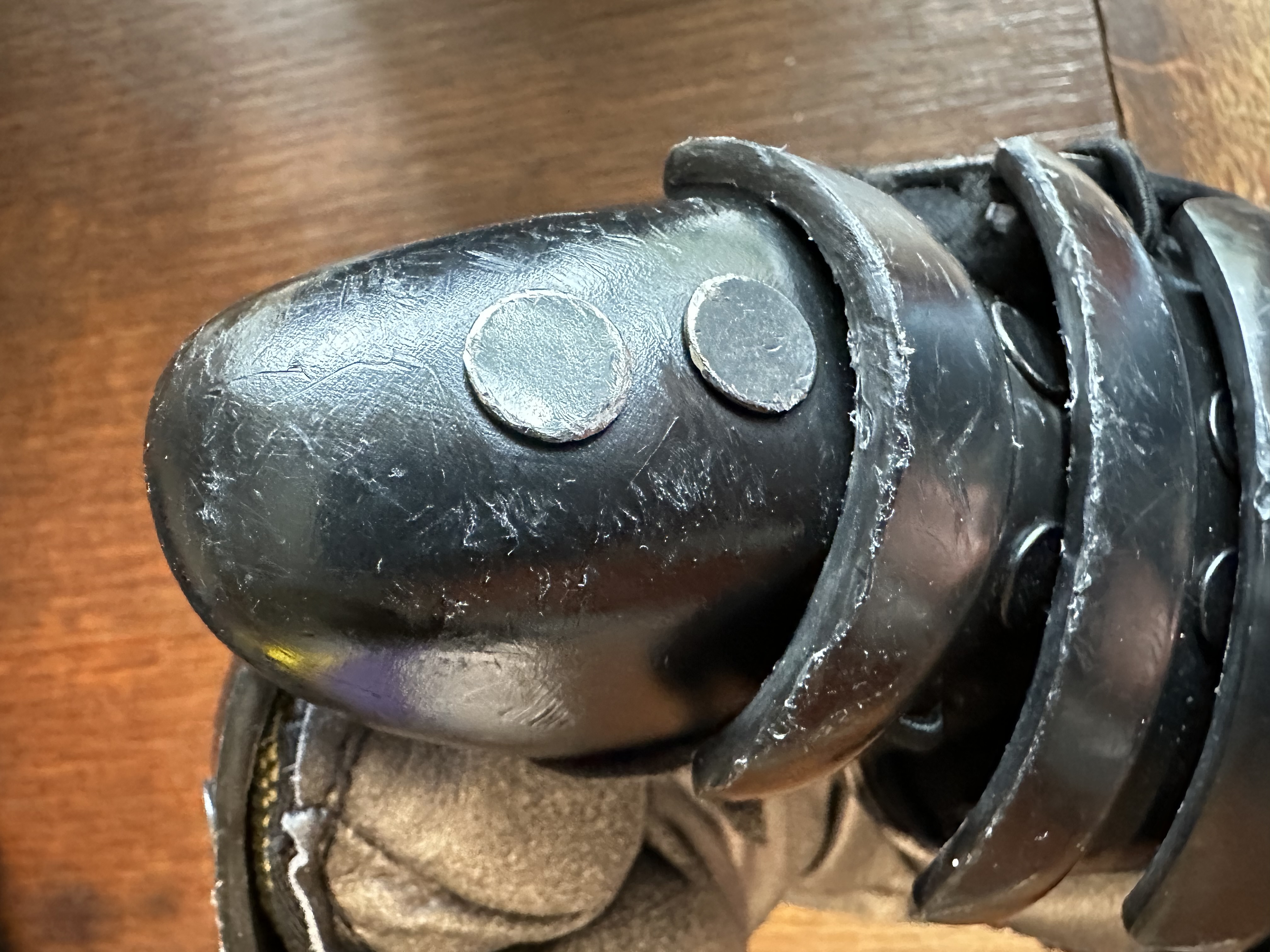
Some people claim the Mittens allow for better mobility than the Red Lobsters, especially when transitioning to a thumb-on-schilt position, but I haven’t found there to be any appreciable difference here. If anything, I find my thumb to be much more mobile in the Red Lobsters, and not prone to slipping out of the thumb cap like on the Mittens, thanks to the built-in underglove.
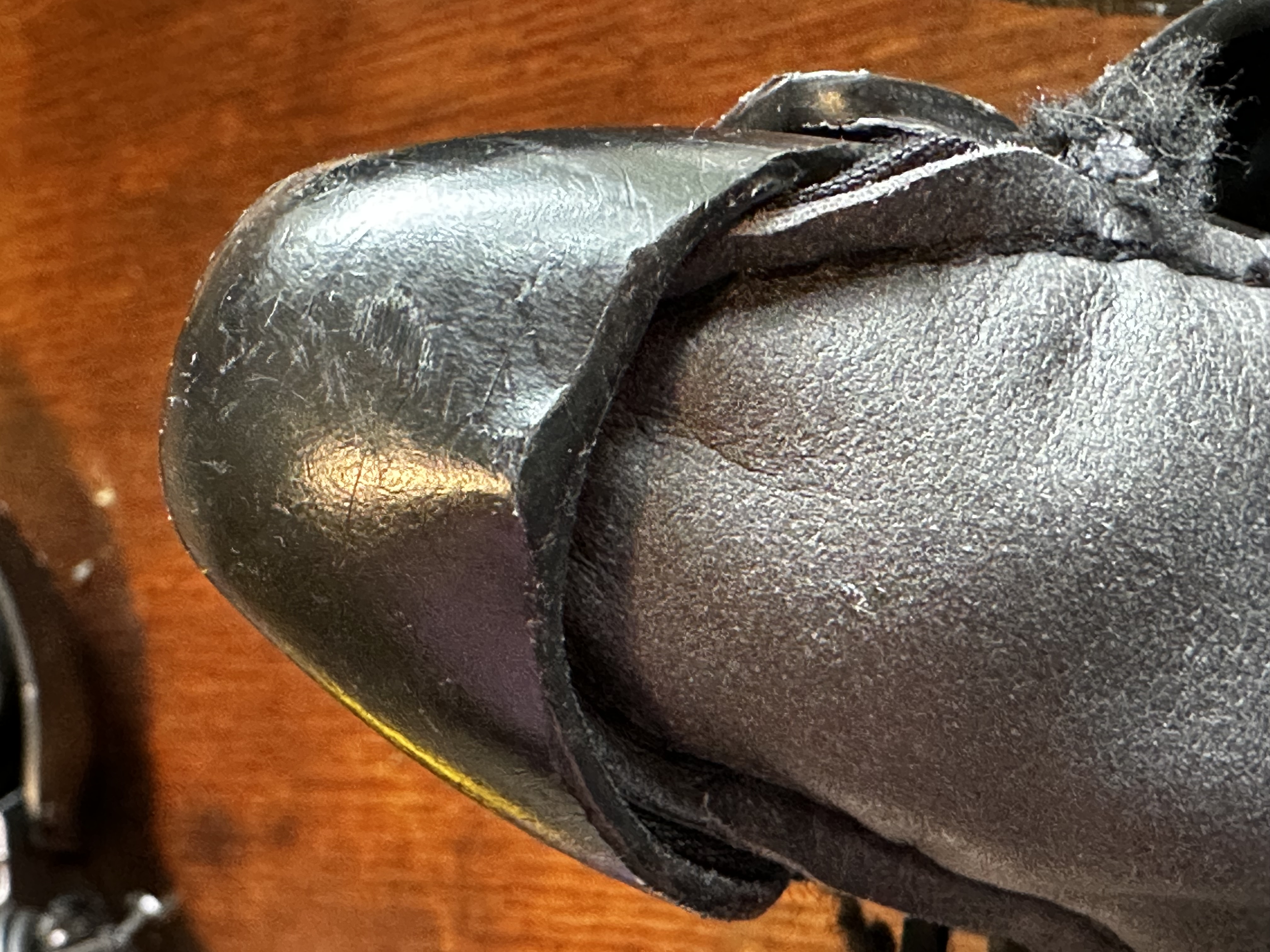
The Red Lobsters do show more wear than my Mittens did, save for on the thumb. With the latter, there were some slight impressions on the styrogum, but the cordura band held up well and looked practically new. The plastic shell of the Red Lobsters show much deeper scrapes and scratches, if that’s meaningful to you one way or another. The thumb wear didn’t seem as significant as the one on my Mittens though, and I’m pretty sure my Red Lobsters got more overall sparring time, so I think this is a materials issue.
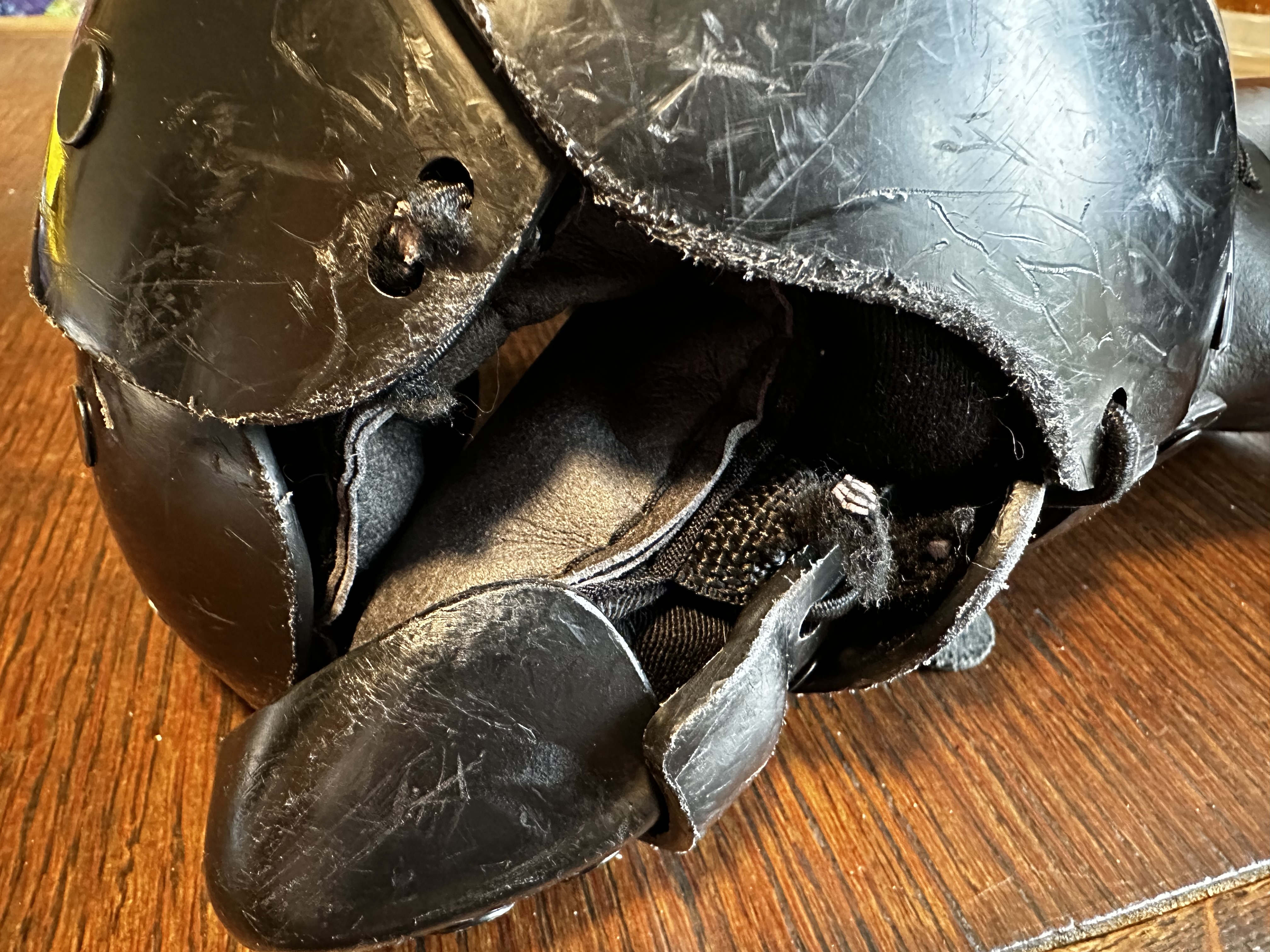
If you haven’t read my review of the Mittens, I end by saying the Mittens are my suggested glove if all you need heavy gloves for is longsword sparring. That’s not all I needed them for, though, so I ultimately sold my pair of Mittens and kept my Red Lobsters for a while longer, as the Red Lobsters proved more versatile for me.
There are a couple reasons you may want to consider the Red Lobsters over the Mittens, depending on your priorities.
If you truly don’t want to feel any pain during even hard hits, the Red Lobsters beat out the Mittens. The Red Lobsters are also less fatiguing to use with one-handed weapons, so if you don’t want to deal with a longer acclimation and break-in period, the Red Lobsters are an easier transition. If you anticipate using one-handed weapons with short grips, the Red Lobsters also work better, as the Mittens simply don’t fit into very narrow grip sections. For example, if you do eskrima and want to be able to use the full gamut of synthetics out there, the Red Lobsters will let you do that, whereas the Mittens are too wide for some models.
While the Lobster Full Thumb is a common glove recommendation for folks new to sparring, it should be the Red Lobsters if the M/L sizing works. They’re simply a better glove than the Full Thumb for not much more money, so it’s a no-brainer to step up.
One final note: there have been a number of reports in late 2022 and early 2023 that the plastic used by SPES in recent batches of all Lobster gloves is different than used in prior batches, and this has resulted in several plates breaking in half after a very short time of use. SPES appears to be standing behind their product and making exchanges, but this is a potential hassle buyers should be aware of. I’d feel more comfortable knowing that the pair I buy is from an older batch, or seeing a public statement from SPES that these issues have been worked out. In the meantime, I’d recommend folks buy the Mittens, or the HF Armory Black Knights, unless the pair you pick up is from an older batch. That said, the V3 Lobsters, to include the V2 Red Lobsters coming out, presumably addressed the brittle plastic issue, but we’ll have to see.